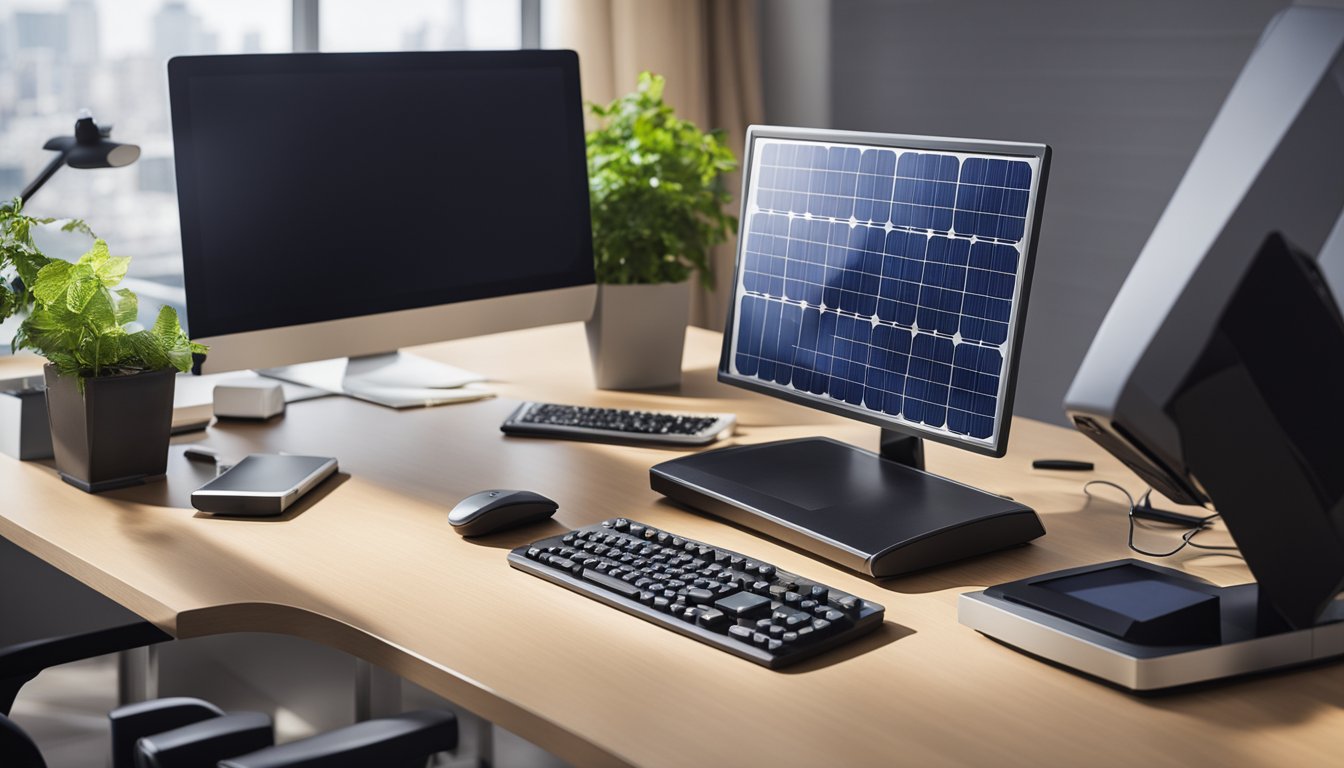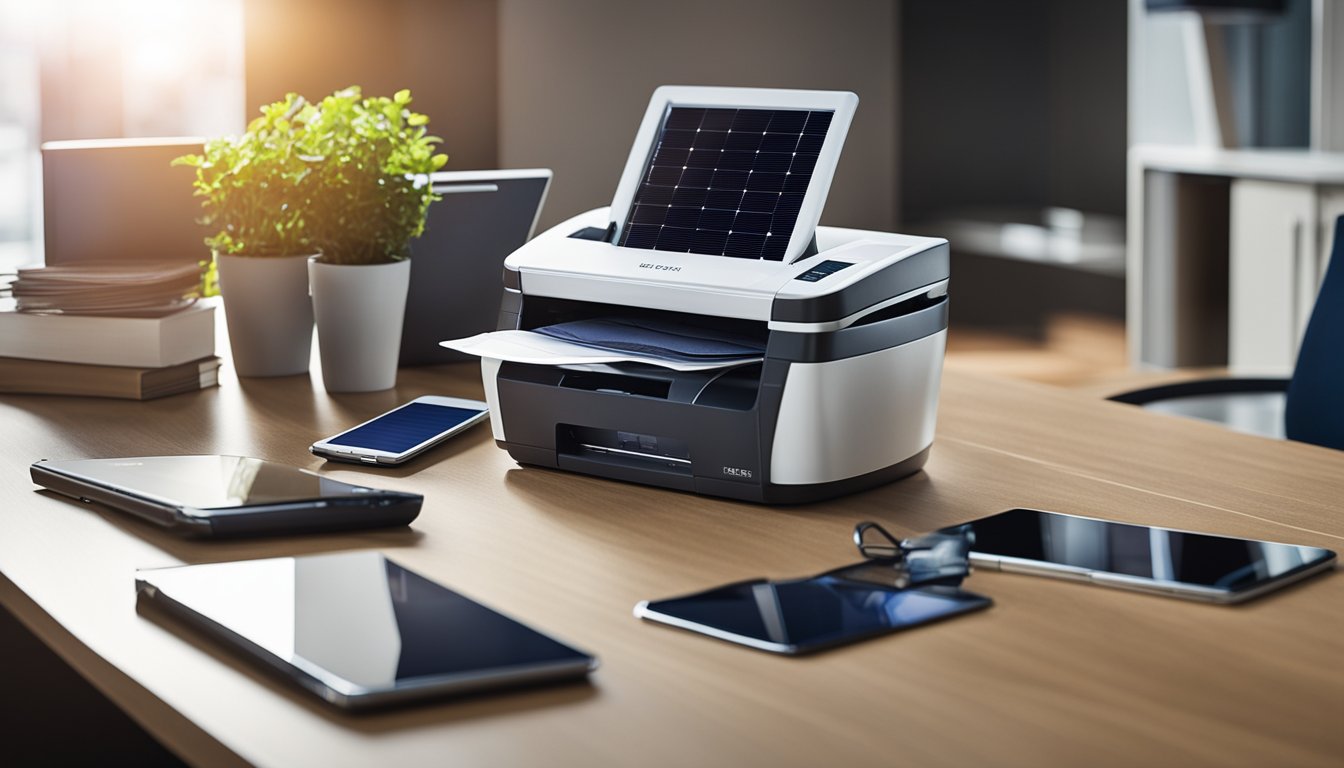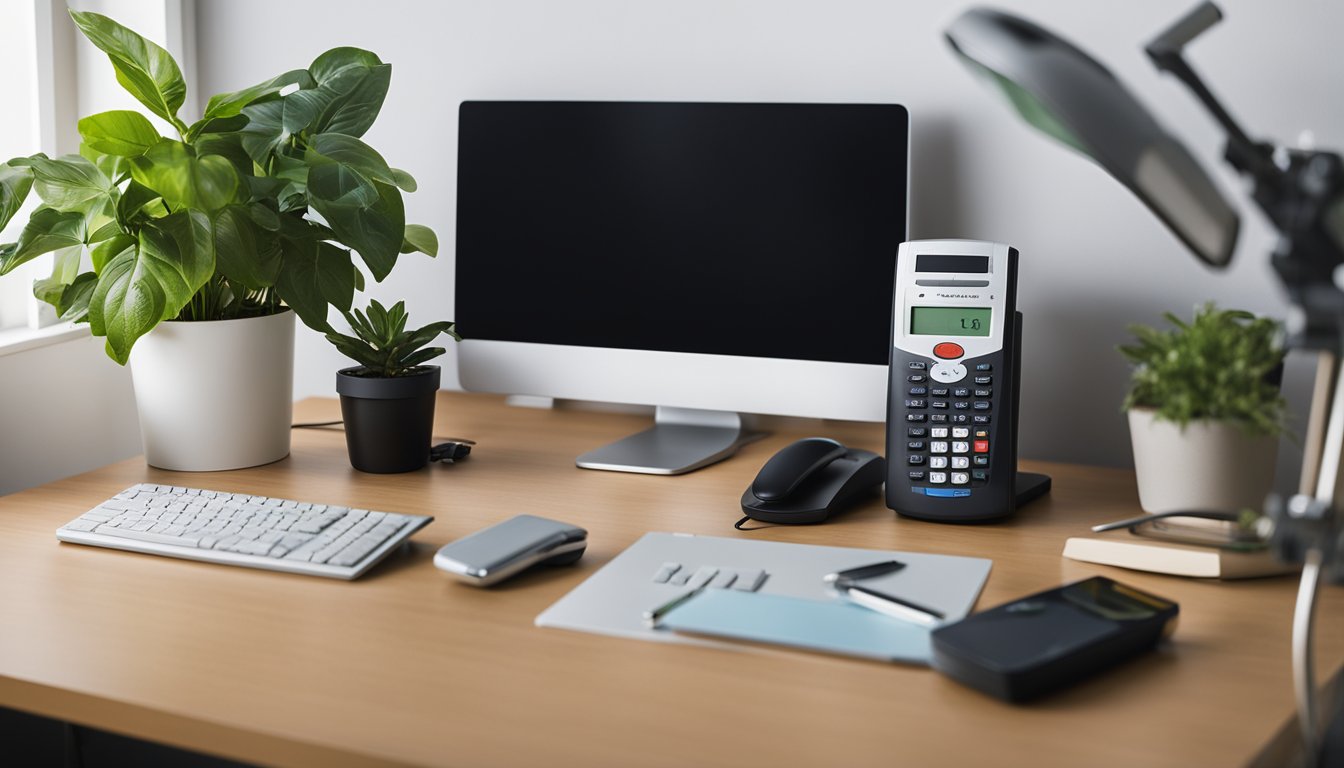Late updated: 08 Oct 2024 08:10
Written by: Amber Collins
Eco-Friendly Office Gadgets To Reduce Energy Costs: Smart Innovations For Sustainable Savings
In today's rapidly changing world, embracing sustainable technology becomes not just an option but a necessity. One of the most effective ways for businesses and individuals to cut energy costs is by integrating eco-friendly gadgets into their office environment. These innovative devices not only help reduce our carbon footprint but also promote sustainability, making workplaces more efficient and appealing.

By harnessing advancements in green technology, we can significantly decrease energy consumption through smart gadgets like programmable thermostats and energy-monitoring devices. The benefits are twofold: reducing operational costs while making a positive environmental impact. Not only are these tools practical, they also support our collective effort towards a more sustainable future.
Exploring sustainable office products, from thermal flasks to eco-friendly printers, can create a workspace that feels progressive and environmentally responsible. It's not just about cutting costs; it's about fostering a culture of sustainability and efficiency that benefits us all and the planet.
Key Takeaways
- Eco-friendly gadgets reduce energy consumption and costs.
- Sustainable office gadgets contribute to lower carbon footprints.
- Green technology supports a more efficient and responsible office environment.
Optimising Energy Efficiency in Office Gadgets
Adopting energy-efficient gadgets in our workplaces can greatly aid in energy conservation and reduce overall operating costs. By focusing on advanced appliances, LED lighting, and smart thermostat technology, we can achieve a more sustainable lifestyle.
Energy-Efficient Appliances and Their Benefits
Energy-efficient appliances are key to reducing office energy consumption. By using devices that consume less power, we can significantly cut down on our electricity bills without sacrificing performance. Fridges, printers, and computers with energy-saving features are essential in this strategy.
These appliances typically bear the ENERGY STAR label, indicating superior energy efficiency. Utilising such technology ensures that our office operates sustainably, contributing to both environmental preservation and cost reduction.
Advancements in LED Lighting
LED lighting represents a major advancement in office energy efficiency. These lights use up to 75% less energy than traditional incandescent bulbs and last significantly longer. By replacing old bulbs with LEDs, we achieve both reduced energy use and lower maintenance costs, as they need to be replaced less frequently.
Moreover, LEDs provide consistent illumination, improving the work environment's comfort without incurring high energy costs. This choice aligns with our commitment to energy conservation and offers a sustainable approach to office lighting.
The Role of Smart Thermostats in Energy Management
Smart thermostats play a crucial role in managing office energy consumption. By automatically adjusting heating and cooling based on occupancy and time of day, these devices help reduce unnecessary energy use.
Many smart thermostats allow for remote control via smartphone apps, giving us the flexibility to optimise energy use from anywhere. This level of control contributes to significant energy savings and enhances our workplace's overall efficiency, reinforcing a sustainable approach to energy management.
Harnessing Renewable Energy and Reducing Waste

Incorporating renewable energy and sustainable practices into our office environments can significantly minimise energy consumption and waste. By focusing on solar-powered gadgets, adopting a paperless workflow, and implementing recycling programmes, we can create a more environmentally friendly and cost-efficient workspace.
Integrating Solar-Powered Gadgets
Using solar-powered gadgets in our office can dramatically reduce our reliance on traditional energy sources. One practical option is solar-powered chargers, which allow us to power our devices such as phones and laptops using renewable energy. These chargers are efficient in harnessing solar energy during sunny days, providing a sustainable alternative.
Another innovative solution is solar desk lamps. With integrated solar panels, they are perfect for lighting without increasing electricity bills. They not only save energy but also extend the life of battery-powered devices by providing consistent lighting.
By investing in solar-powered office furniture, like desks with integrated charging stations, we contribute to a sustainable workspace. These solutions not only help in lowering electricity consumption but also align with our green initiatives.
Adopting a Paperless Workflow
Transitioning to a paperless workflow can drastically cut down our office's paper usage, benefiting both the environment and our overheads. Digital tools, such as document sharing platforms and electronic signature software, facilitate collaboration without the need for printing.
Scanning existing paper documents and storing them digitally can free up physical storage space while reducing our carbon footprint. Using tablets and digital notebooks for note-taking in meetings is another practical action we can implement.
Also, providing training and resources to our team on how to properly use these digital tools ensures a smooth transition. Meanwhile, this shift fosters a culture of sustainability, pushing us towards an entirely paper-free office environment.
Implementing Recycling Programs in the Office
Recycling programmes play a vital role in waste management in our office. Placing clearly labelled recycling bins throughout the workspace encourages everyone to discard materials responsibly. For instance, bins for plastics, paper, and electronic waste help in proper sorting.
Partnering with local recycling companies can ensure that materials are recycled effectively. It’s important to promote the use of recycled materials wherever possible, whether it's in office supplies or packaging.
Engaging staff with regular workshops and updates on recycling practices can further reinforce these habits. By creating a recycling culture, we not only reduce waste but also support green initiatives within our community.
Frequently Asked Questions

We explore numerous eco-friendly gadgets and technologies that can help reduce energy costs in office environments. These solutions span from advanced lighting systems to renewable energy devices, all aimed at promoting sustainability while lowering expenses.
What are the top energy-saving devices that one can utilise in an office environment?
In many office settings, energy-saving devices like smart thermostats and automated lighting systems play pivotal roles. These gadgets optimise energy usage by adjusting settings based on occupancy and daylight availability, thus significantly reducing consumption.
How can smart power strips contribute to reducing an office’s energy consumption?
Smart power strips mitigate idle power consumption by cutting electricity supply to devices in standby mode. This prevents phantom loads, saving energy that would otherwise be wasted, and ultimately contributing to lower electricity bills.
What types of LED lighting solutions are most suitable for office settings to lower electricity costs?
Office environments benefit from LED panel lights and smart LED bulbs. These options offer energy-efficient illumination with a longer lifespan than traditional bulbs, ensuring sustained cost-effectiveness. Some models include daylight and occupancy sensors for additional savings.
In what ways can energy-efficient office appliances cut down on energy bills?
Energy-efficient appliances, such as ENERGY STAR certified computers and printers, consume less power without compromising performance. This efficiency leads to reduced operational costs, helping organisations manage their energy expenses better.
Can you suggest some renewable energy gadgets that are suitable for an office space?
Solar-powered chargers and small wind turbines are viable options. Solar chargers can power small devices, while compact wind turbines can supplement grid power. These renewable gadgets contribute to a greener office atmosphere.
How do solar chargers help in promoting a greener office while cutting energy expenses?
Solar chargers utilise sunlight to power electronic devices, reducing dependency on grid electricity. This not only lowers energy costs but also demonstrates a commitment to environmental sustainability, reinforcing a company's eco-friendly image.
